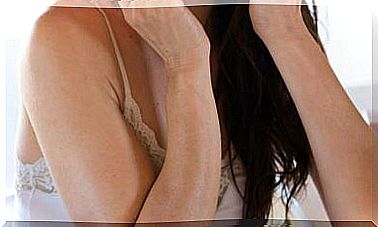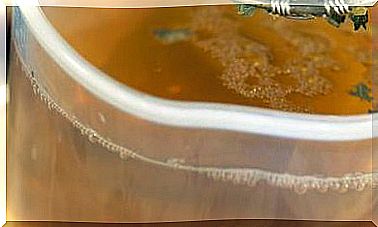How Is A Cosmetic Formulated?
Sure you read the labels of what you eat, but do you know what you put on your face? We reveal the secrets of the labels of your cosmetics.

Many times we wonder how we can know how to read and understand each ingredient that is present in the formulation of the products we consume, not only at a gastronomic and nutritional level, but also at a topical and beauty level.
Every day people worry about receiving real information about what they consume, because more and more people want more transparency and honesty.
People begin to understand that everything is connected and that it is useless to eat well if we then apply harmful products to our skin
As I comment in the previous lines, it is not a specific concern, but at a global level.
People begin to understand that everything is connected and that it is useless to eat well, if we then apply harmful products to our skin and, likewise, it is useless to take care of our cosmetics, if then our diet is of poor quality.
Obviously I am a great defender of cosmetics not only natural, if not organic and ecological. In this post I want to focus on briefly explaining how cosmetics are formulated in general and how to be able to read the ingredients of each formulation in a practical way.
In this way, you will be the ones who judge the cosmetics you choose to use and you will know if the effect and the ingredients that you are looking for in each formulation are truly present in the cosmetic.
Ingredients
In all the formulations there are (with a greater or lesser amount) percentages of ingredients and active principles that make a balanced formulation.
Not all cosmetics have these ingredients exactly and, as I said before, the percentage varies depending on the product and the purposes of each formulation, that is, the effect that you want to achieve with said product.
But broadly speaking, in almost all products, be it conventional cosmetics or natural or organic cosmetics, the bases of the formulation and the ingredients are very similar.
Water
In all formulations, as far as creams are concerned, there is an aqueous phase. This aqueous phase serves to lighten the texture, to make the formulation more fluid or to transport the hydrophilic actives of the formula, which are mixed with the water.
Distilled water, floral water, alcohol, fruit or plant juices can be used in the aqueous phase of the formulation. These ingredients vary according to the quality that you want to give the product and the importance that is given to the ingredients. It is evident that water is much cheaper than a floral water for example.
Oils
Then we have the oil phase. This phase, in addition to stabilizing the formula and making it more hydrating, has an occlusive effect to limit the loss of natural water from the skin. Depending on the quality of the product, we will find either better or lower quality vegetable oils or mineral oils derived from petrochemicals or synthetic substances.
Obviously a vegetable oil is much better since they provide vitamins and fatty acids in their natural composition. However, the cost is higher than that of mineral oils, which, although of lower quality, are much cheaper.
Emulsifiers
The emulsifiers are required for mixing the aqueous phase with the oil. Most are of chemical origin, however there are emulsifiers of ecological origin. These emulsifiers can be known as surfactants, since they bind water with oil.
These emulsifiers play the role of wetting or moisturizing agents. In natural or organic cosmetics, vegetable waxes, derived from coconut, beet or sugar are used as emulsifiers.
Preservatives
Preservatives are a very important part of any formulation that contains water, since where there is water there is a risk of the proliferation of bacteria.
There are both chemical and natural preservatives that deal with bacteria and their proliferation. However, they are not harmless substances, since they are intended to eliminate bacteria. For this reason, it could be said that they are a necessary evil in any type of cosmetics, both natural, organic and in conventional cosmetics.
If the formulation does not contain an aqueous phase (a body butter for example) it is not necessary to use preservatives since bacteria cannot live in it.
The preservatives in conventional cosmetics are synthetic and the natural ones are usually alcohols or essential oils, but that does not mean that they are sometimes irritating or allergenic.
The active principles are the protagonists of the marketing of cosmetics. There are laboratories that spend millions to be able to synthetically create a new asset and thus be able to patent it, however there are other formulations that use extracts of valuable or exotic plants.
Regardless of the origin, its effectiveness is controversial, since it is difficult to demonstrate even with studies, since generally these studies are minimal or subjective.
What I can tell you is that the active ingredients represent a minimum part of a generally conventional cosmetic formulation … and that in natural or organic cosmetics these active ingredients are present in a higher percentage.
Perfumes
Perfumes are used to mask the odors of some ingredients that can be unpleasant. These perfumes are found in both conventional and natural cosmetics. We can obtain perfumes from synthetic formulations and others, obtain them from essential oils.
We can see that the difference between conventional cosmetics and natural or organic ones lies in the quality of the ingredients, but that the bases for their formulation are quite similar.
In the next post I will teach you to read in a simple way the so-called INCIS, which is the nomenclature of the ingredients and formulations that must be present in all cosmetics and how to know if what they sell us is what we are really acquiring.
I hope you liked this post.









